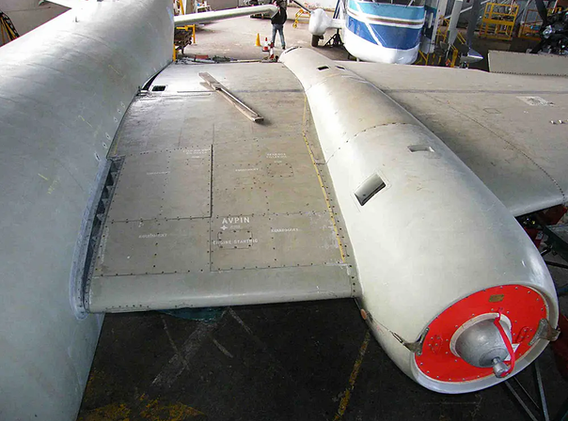> COLLECTION > AIRCRAFT > FAST JETS > Canberra PR.9
CANBERRA PR.9

Image: MARK J. CAIRNS

Image: MARK J. CAIRNS
History of the Canberra
Conceived as a high altitude, unarmed bomber, the English Electric Canberra first flew on the 13th May 1949 and entered service with the RAF two years later eventually equipping over 30 RAF squadrons.
The design proved to be such a success that overseas orders soon followed with examples eventually seeing service with 14 airforces worldwide, and production lines being established in Australia and the USA for licence built examples.
On 21 February 1951, an RAF Canberra B Mk 2 (serial number WD932) flown by Squadron Leader A Callard, took off from RAF Aldergrove and flew to Gander Newfoundland, becoming the first jet to make a non stop, un-refuelled transatlantic crossing. The flight covered almost 1,800 miles in 4h 37mins.

Like its predecessor, the Mosquito, it quickly became apparent that the Canberra could fulfil many other roles, and a photographic reconnaissance aircraft was one of the first to be identified, even before the bomber variant had flown.
The photo reconnaissance, PR.3 variant, first flew in March1950, with the last of these being delivered to squadrons during 1954. By this stage the next version, the PR.7 was entering service, but already plans where being drawn up for another version capable of flying at over 50,000 feet exceeding the ceiling of the PR.3 and PR.7.
Short Brothers & Harland in Belfast had already established production lines manufacturing Canberra B2 and B6 variants.
Features of the Canberra PR.9 type
The PR.9 would however see the company undertaking major redesign and development of the type, incorporating improved hydraulic systems and a hinged nose for access to the navigators station which now included an ejection seat. It also had an enlarged wing with more powerful Rolls Royce Avon 206 engines fitted.
Eventually a total of 23 PR.9s were built between 1958 and 1962, however only 21 were actually delivered to the RAF. One aircraft (XH129) was written off before it was even delivered and another (XH132) was used for missile trials, being re-designated the SC.9.
In Jan 1960, the Canberra PR.9 entered service with 58 Sqn at RAF Wyton and the first operational sortie was flow three months later. No 13 Squadron became the second unit to operate the type in the summer of 1961 from its base in Malta, beginning a long association between the PR.9 and operations in the Mediterranean and Middle East.
During 1962, PR.9s were used to photograph Russian shipping movements during the Cuban crisis, but by early 1963, No. 58 Sqn had handed over its aircraft to 39 Sqn in Malta when it reverted to being a PR.7 squadron.
When the RAF withdrew from its remaining bases in the Gulf during 1971, 13 Sqn moved to Malta and replaced 39 Sqn, who disbanded. Now assigned to NATO, it provided the only high altitude reconnaissance squadron on its southern flank until 1978 when it moved to RAF Wyton, before disbanding in 1981.
The last remaining PR.9s remained on the strength of 39 Sqn until it was disbanded in June 1982 and replaced by No. 1 Photographic Reconnaissance Unit (PRU) also at Wyton under the control of 18 Group.
However, rationalisation of the RAF in the early 1990s resulted in 1 PRU assuming the name of 39 Sqn (although officially its title was 39 (1 PRU) Squadron.

Throughout the Cold War the PR.9 flew missions when and where surveillance was called for, but in more recent years the aircraft was deployed for operations over Rwanda, Kosovo, the 2003 Gulf conflict and then Afghanistan in 2006.

Bringing Canberra PR.9 XH131 to the UAS
XH131 was the third aircraft from the PR.9 production line at Belfast and is the oldest surviving example of the type. This aircraft was purchased by the UAS with the assistance of the Heritage Lottery Fund, joining the collection in Northern Ireland during December 2010.
Canberra PR.9 moving to Ulster Aviation Society hangars Maze Long Kesh in 1993
Peter Cooper was the production shoot editor who filmed the day above, back in 1993 when the Short Canberra PR.9 ‘XH131’ came to the Ulster Aviation Society's hangars at Maze Long Kesh, Lisburn.













































